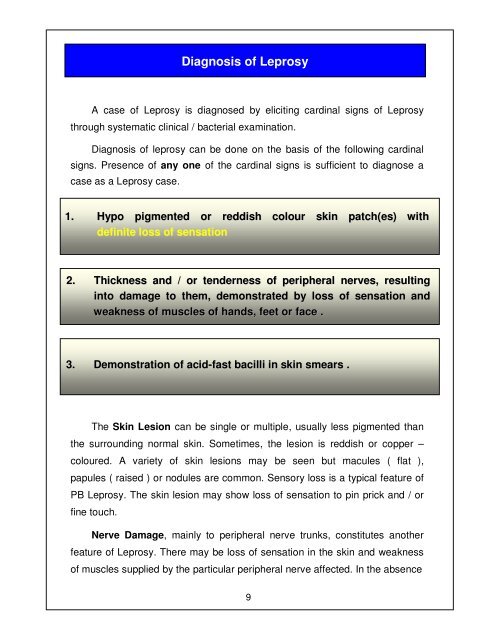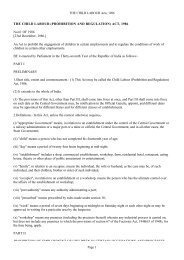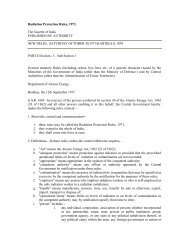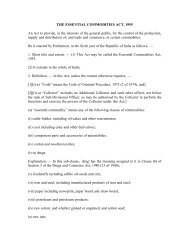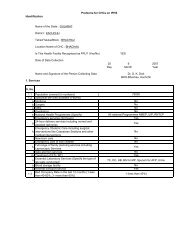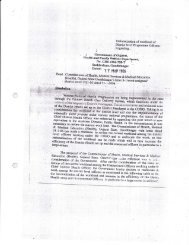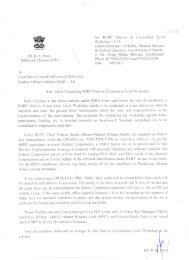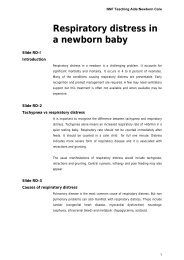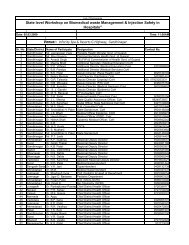Leprosy Training Module for Medical Officers
Leprosy Training Module for Medical Officers
Leprosy Training Module for Medical Officers
You also want an ePaper? Increase the reach of your titles
YUMPU automatically turns print PDFs into web optimized ePapers that Google loves.
Diagnosis of <strong>Leprosy</strong><br />
A case of <strong>Leprosy</strong> is diagnosed by eliciting cardinal signs of <strong>Leprosy</strong><br />
through systematic clinical / bacterial examination.<br />
Diagnosis of leprosy can be done on the basis of the following cardinal<br />
signs. Presence of any one of the cardinal signs is sufficient to diagnose a<br />
case as a <strong>Leprosy</strong> case.<br />
1. Hypo pigmented or reddish colour skin patch(es) with<br />
definite loss of sensation<br />
2. Thickness and / or tenderness of peripheral nerves, resulting<br />
into damage to them, demonstrated by loss of sensation and<br />
weakness of muscles of hands, feet or face .<br />
3. Demonstration of acid-fast bacilli in skin smears .<br />
The Skin Lesion can be single or multiple, usually less pigmented than<br />
the surrounding normal skin. Sometimes, the lesion is reddish or copper –<br />
coloured. A variety of skin lesions may be seen but macules ( flat ),<br />
papules ( raised ) or nodules are common. Sensory loss is a typical feature of<br />
PB <strong>Leprosy</strong>. The skin lesion may show loss of sensation to pin prick and / or<br />
fine touch.<br />
Nerve Damage, mainly to peripheral nerve trunks, constitutes another<br />
feature of <strong>Leprosy</strong>. There may be loss of sensation in the skin and weakness<br />
of muscles supplied by the particular peripheral nerve affected. In the absence<br />
9


